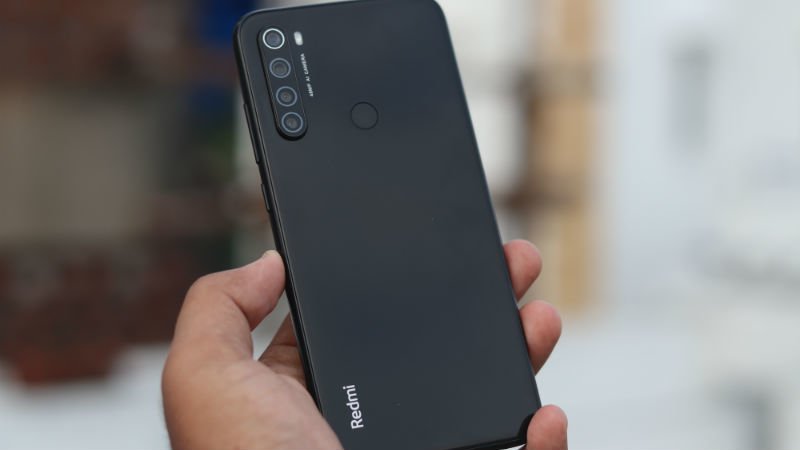What the Realme 3 Pro Does Better The Realme 3 Pro was launched earlier this year in April taking on the Redmi Note 7 Pro smartphone. As for the specs, the phone sports a 6.3-inch Full HD+ IPS LCD display with a resolution of 2340 x 1080 pixels and Corning Gorilla Glass 5 protection. Underneath, it has the Qualcomm Snapdragon 710 chipset, clubbed with up to 6GB of RAM and 128GB of onboard storage. It has a dedicated microSD card slot as well. Cameras on the Realme 3 Pro include 16MP Sony IMX519 sensor paired with a 5MP depth sensor. This is the same sensor we saw on the OnePlus 6T launched at the end of 2018. There’s also a 25MP selfie camera on the front. The handset is currently running ColorOS 6.0.1 based on Android 9 Pie. It has a 4045mAh battery with support for VOOC 3.0 fast charging. The Realme 3 Pro weighs 172 grams and it has a plastic back. The Snapdragon 710 chipset on the Realme 3 Pro excels at day-to-day tasks and the battery life is also very reliable. And the chipset is way powerful than the Snapdragon 665 SoC we get on the Redmi Note 8. The VOOC 3.0 charging tech is also an important addition to the Realme 3 Pro. The screen gets the job done and the ColorOS experience isn’t that great compared to MIUI, but at least it’s ad-free for now. The primary 16MP Sony IMX519 sensor captures decent images; While the images are not better than the Sony IMX586 sensor we get on the Realme 5 Pro or the Redmi Note 7 Pro, they are on-par with the Samsung GM1 sensor we get on the Redmi Note 8. The 25MP selfie camera on the Realme 3 Pro is a clear winner between the two phones. What the Redmi Note 8 Does Better The Redmi Note 8 is the latest launch from Xiaomi and it’s a great smartphone for Rs 9,999. As for the specs, we’re looking at a 6.3-inch Full HD+ display, Snapdragon 665 SoC, up to 6GB of RAM & 128GB of internal storage, 48MP quad-camera setup and a 4000mAh battery with 18W fast charging support. The Redmi Note 8 runs MIUI 10 based on Android 9 Pie out of the box. The Redmi Note 8 is a great performer when it comes to day-to-day tasks, but it lags behind Snapdragon 710 in terms of gaming. Also, the battery life is also better on the Redmi Note 8 compared to the Realme 3 Pro, thanks to MIUI optimisations. That said, MIUI 10 on the Redmi Note 8 comes with ads which has become an issue now for many, but for general users, ads don’t matter. And there are several ways to get rid of ads on Xiaomi smartphones. Charging speeds are on par with the Realme 3 Pro. The cameras on the Redmi Note 8 offer versatility with 8MP ultra-wide-angle sensor, 2MP macro sensor and a 2MP depth sensor. The primary 48MP shooter in the Samsung GM1 which can yield 48MP shots, but shoots 12MP shots by default. Selfie camera performance is also decent on the Redmi Note 8, but the 25MP shooter on the Realme 3 Pro beats it by a huge margin. The Redmi Note 8 comes with a USB Type-C port and has a glass body, which the Realme 3 Pro lacks. There’s no doubt that the Redmi Note 8 is a better-looking one and a premium looking one between the two phones. Realme 3 Pro vs Redmi Note 8: Which One to Choose? The Realme 3 Pro is a great smartphone for Rs 9,999 and it comes with 4GB of RAM and 64GB of internal storage along with a dedicated microSD card slot. However, with versatile cameras, premium design and USB Type-C port, the Redmi Note 8 hits right back. At Rs 9,999, both the phones offer excellent value for money, but the Realme 3 Pro gets ahead with a powerful chip. Nevertheless, if premium design, versatile cameras and good battery life are on the list of your priorities, then the Redmi Note 8 is a great buy for you. The Realme 3 Pro is available via open sale because it was launched way back in April 2019, but the Redmi Note 8 is still available via flash sales.
